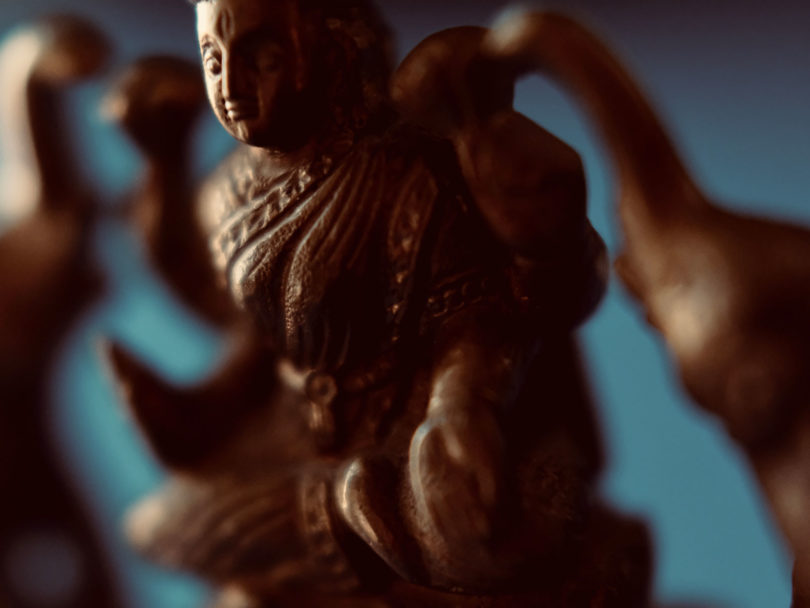As a child spending summers at my grandparents’ house, I would watch as they prayed before a shrine in a room they dedicated to worship. My grandparents were from India, and “God’s room,” as they called it, had many colorful paintings of exotic, mostly Hindu, deities. There was even a picture of Jesus in a beautiful blend of two traditions. My grandmother prayed in that room daily. The shrine was decorated with carefully sculpted deities that she would adorn with fruit and fresh flowers, and she would burn incense while praying silently to each god. We were all careful not to disturb her while she was in prayer. As a child, I was entranced by the beauty of the room, its shrine and all the scents.
A couple weeks ago, I learned about a very different tradition when my aunt gave me a small collection of National Geographic magazines from the early nineties. There is probably no better place to read about traditions from around the world, and in one issue, I read about the Surma people of Ethiopia, whose women wear lip plates. This is done by
TRADITIONS BRING PEOPLE TOGETHER. THEY CONNECT US NOT WITH JUST THE PAST, BUT WITH EACH OTHER TODAY.
piercing their lower lip and gradually stretching it with ever larger plates. These lip plates are rarely taken off in the presence of men, and the size of the plate is said to represent a woman’s social and economic status. Surma women take pride in crafting and painting their plates. How the tradition originated is unknown by the Surma, and who knows how long it will continue?
A friend of mine who grew up in Casablanca, Morocco, recently told me of another tradition I had not experienced — how, when he was a boy, his mother would prepare dough daily. She would send him off with the dough to be baked into bread at a public oven called a faraan. Neighborhood kids all over Casablanca would deliver their mothers’ dough to faraans in the morning on their way to school. The bread would then be picked up at lunchtime and eaten with the family. The faraans provided a social epicenter for the community. Kids would also deliver dough and later pick up bread for the elderly and other community members who couldn’t do it themselves. The bakers were adept at distinguishing one family’s bread from another just by the way it was prepared. Though the public faraans are now a fading tradition as Casablanca homes are being outfitted with modern ovens, the faraans, and the way they forged bonds within their community, were long a key component of Casablanca society.
As we head into the holiday season we should remember that traditions bring people together. They connect us with not just the past, but with each other today. Sharing our traditions allows us to communicate our values, find commonality and see that our traditions carry on. Appreciating and experiencing the traditions of others enriches our lives. My grandparents never celebrated Thanksgiving in India, but over the years they adopted the holiday traditions of their American friends. It’s hard to think of a greater compliment than adopting someone else’s culture. Try it yourself. You can make that a new tradition.

